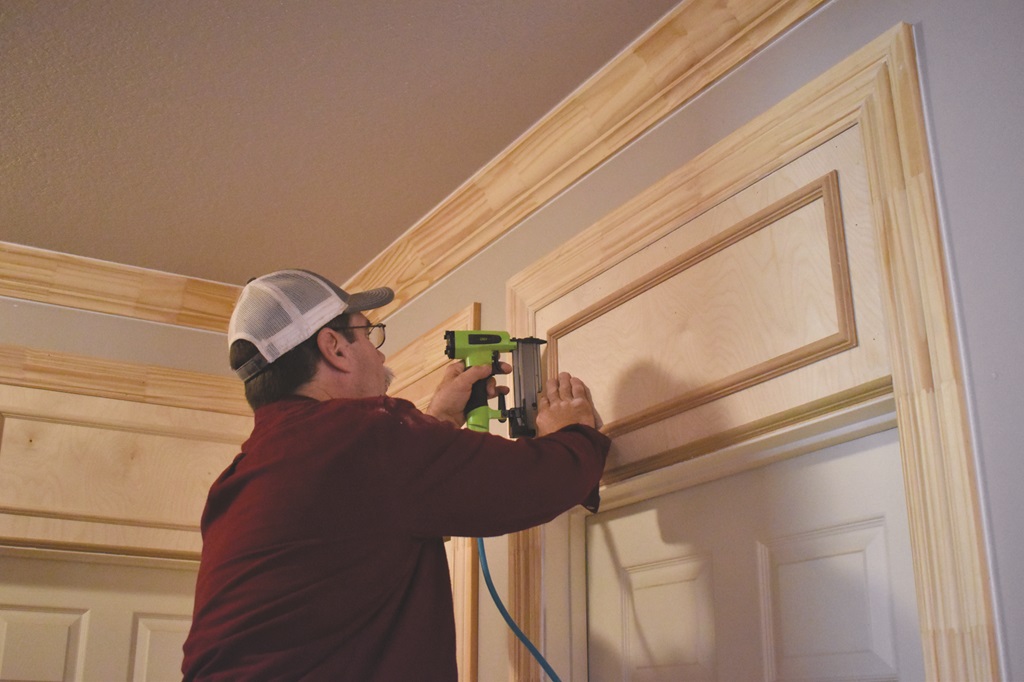Have you ever noticed a pesky crack appearing above your door frame? It’s a common sight in many homes, and while it may not always be a cause for immediate panic, it’s essential to understand what it means and when you should start worrying. In this guide, we’ll take you through everything you need to know about vertical cracks above door frames, from their causes and potential dangers to steps you can take to address them.
Why is there a crack above my doorframe?
Before we dive into the details, let’s first understand why these cracks appear. Imagine your home as a living, breathing entity, constantly adapting to the conditions it faces. It expands and contracts with changes in temperature and humidity, and this movement can sometimes result in cracks. Think of it as your home’s way of sighing, adjusting, and expressing itself.
Causes of Vertical Cracks Above Door Frames
- Normal Settling: When a new house is built or an addition is made to an existing structure, it goes through a process called settling. During this time, various materials like wood and concrete adjust to their new environment. This can cause minor cracks to appear in areas like door frames. It’s like a house getting comfortable in its own skin.
- Temperature and Humidity Fluctuations: As the seasons change, your home undergoes temperature and humidity variations. These fluctuations can lead to the expansion and contraction of building materials, which may result in cracks forming above door frames. It’s akin to your home’s way of adapting to the weather.
- Foundation Issues: Sometimes, the root cause of vertical cracks above door frames can be more serious. Foundation problems, such as settling, shifting, or inadequate support, can put stress on your home’s structure, leading to cracks. Think of it as your house trying to tell you it needs some TLC.
- Structural Movement: In some cases, structural movement within your home can cause cracks above door frames. This might be due to the weight distribution of the upper floors or changes in the load-bearing elements. It’s like your house trying to find its balance.
When Should You Worry About the Crack?
Now that we’ve identified the potential causes of vertical cracks above door frames, let’s discuss when you should start worrying about them. Not all cracks are created equal, and understanding their severity is crucial.
- Size Matters: The width of the crack can be a good indicator of its seriousness. Small, hairline cracks (typically less than 1/8 inch wide) are often considered normal and can be easily patched up. However, if the crack is wider than 1/8 inch, it may be a sign of a more significant issue.
- Horizontal Cracks: While vertical cracks are more common and less concerning, horizontal cracks are a different story. If you spot a horizontal crack above your door frame, it’s time to be concerned. Horizontal cracks often indicate structural problems and should be inspected by a professional.
- Continuing Growth: Monitor the crack’s progression. If it keeps getting wider or longer over time, it’s a red flag. This could signal an ongoing issue that needs immediate attention.
- Doors and Windows Misalignment: If your doors or windows start sticking or become difficult to open and close, it could be related to the crack above the door frame. This is a clear sign that something isn’t right and should be addressed promptly.
- Other Signs of Structural Problems: Keep an eye out for other signs of structural issues in your home, such as sloping floors, uneven walls, or cracks in the foundation. These can be additional indicators that the crack above your door frame is part of a more significant problem.
What to Do When You Spot a Crack Above Your Door Frame
So, you’ve noticed a crack above your door frame, and you’re wondering what to do next. Here’s a step-by-step guide to help you assess the situation and take appropriate action:
Step 1: Document the Crack
Grab your smartphone or camera and take clear photos of the crack. This documentation will be valuable when you consult with a professional or if the situation worsens over time.
Step 2: Measure the Crack
Use a ruler or measuring tape to determine the width and length of the crack. This measurement will help you track any changes in the crack’s size.
Step 3: Check for Other Signs
Inspect the surrounding area for any additional signs of structural issues, such as uneven floors, misaligned doors or windows, or cracks in the foundation. Make a note of these observations.
Step 4: Consult a Professional
Contact a structural engineer or a qualified contractor to assess the crack. They will be able to determine the root cause of the issue and provide recommendations for repair if necessary. It’s essential to consult an expert rather than attempting DIY solutions, especially for significant cracks.
Step 5: Follow the Expert’s Advice
Based on the professional’s assessment, follow their recommendations for repair or reinforcement. This may involve patching the crack, addressing underlying foundation issues, or making structural adjustments.
Step 6: Regular Monitoring
After addressing the issue, continue to monitor the area for any changes. If the crack remains stable and there are no further signs of trouble, you can rest assured that your home is in good shape.
FAQs (Frequently Asked Questions)
- Can I fix a small crack above my door frame myself?
For small, hairline cracks, you can attempt a DIY fix using patching materials available at your local hardware store. However, if the crack is wider than 1/8 inch or if you notice any structural issues, it’s best to consult a professional.
- How much does it cost to repair a vertical crack above a door frame?
The cost of repair can vary widely depending on the severity of the issue and your location. Minor crack patching may be relatively inexpensive, while addressing structural problems can be more costly. It’s essential to obtain quotes from qualified contractors for an accurate estimate.
- What are some preventative measures to avoid cracks above door frames?
To minimize the likelihood of cracks, maintain a consistent indoor temperature and humidity level, as extreme fluctuations can stress building materials. Additionally, ensure proper foundation maintenance and address any structural issues promptly.
- Can I just fill the crack with caulk or putty to hide it?
While filling the crack with caulk or putty may temporarily hide the cosmetic issue, it won’t address any underlying structural problems. It’s crucial to determine the cause of the crack and address it properly to prevent further damage.
- Is it safe to live in a house with a crack above the door frame?
In most cases, a crack above the door frame is a cosmetic issue or a minor result of natural settling. However, if you notice any of the warning signs mentioned in this guide, it’s advisable to have a professional inspection to ensure the safety and integrity of your home.







